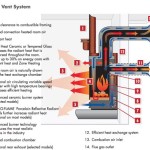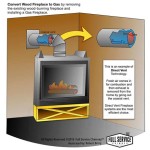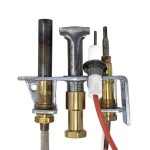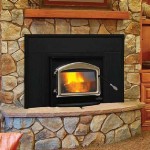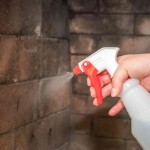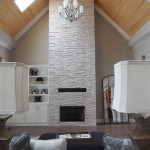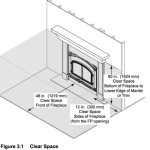Double Sided Wood Fireplace Insert: A Comprehensive Guide
A double-sided wood fireplace insert, also known as a see-through or peninsula fireplace insert, offers a unique and visually striking heating solution for residential and commercial spaces. Unlike traditional fireplace inserts that only radiate heat from one side, these units provide warmth and ambiance to two separate rooms simultaneously. This feature makes them particularly appealing for open floor plans or for creating a focal point that bridges two distinct living areas.
The design and installation of a double-sided wood fireplace insert require careful consideration to ensure optimal performance, safety, and aesthetic appeal. This article will explore the various aspects of double-sided wood fireplace inserts, including their benefits, considerations for installation, maintenance requirements, and available design options.
Understanding the Advantages of Double-Sided Inserts
The primary benefit of a double-sided wood fireplace insert is its ability to heat two rooms concurrently. This is particularly advantageous in homes with open layouts, where a single heating source can efficiently warm a larger space. By effectively distributing heat, these inserts can reduce reliance on central heating systems, leading to potential energy savings.
Beyond heating efficiency, double-sided inserts significantly enhance the aesthetic appeal of a home. They create a visually stunning focal point that can be enjoyed from multiple perspectives. The flickering flames and crackling wood provide a warm and inviting atmosphere in both rooms, adding a touch of elegance and sophistication to the overall décor.
Furthermore, these inserts can increase the property value of a home. The unique design and added functionality of a double-sided fireplace make it a desirable feature for potential homebuyers. It represents a significant upgrade compared to a traditional fireplace, offering both practical and aesthetic benefits.
Key Considerations for Installation
Installing a double-sided wood fireplace insert is a complex process that requires careful planning and adherence to safety regulations. It is crucial to consult with a qualified professional who has experience in fireplace installation and chimney systems. The installation process typically involves several key steps, starting with a thorough assessment of the existing fireplace and chimney.
The existing chimney must be in good condition and properly sized to accommodate the new insert. If the chimney is damaged or inadequate, it may need to be repaired or replaced. A stainless-steel liner is often recommended to ensure proper venting and prevent the buildup of creosote, a flammable byproduct of wood burning.
The fireplace opening must also be properly prepared to receive the insert. This may involve modifications to the existing brickwork or the construction of a new firebox. The insert must be securely installed and properly sealed to prevent air leaks and ensure efficient combustion. Proper insulation is also crucial to prevent heat loss and protect surrounding combustible materials.
Local building codes and regulations must be strictly followed throughout the installation process. Permit requirements vary depending on the location, and it is essential to obtain the necessary permits before starting any work. Inspections are typically required to ensure that the installation meets all safety standards.
The placement of the insert is another critical consideration. Ideally, the insert should be positioned in a location that allows for optimal heat distribution to both rooms. Factors such as room size, layout, and insulation levels should be taken into account when determining the best placement. The insert should also be easily accessible for loading wood and cleaning.
Ventilation is paramount for the safe and efficient operation of a wood-burning fireplace. A properly functioning chimney is essential to draw smoke and combustion gases out of the home. It is crucial to ensure that the chimney is free from obstructions and that the draft is adequate. In some cases, a chimney fan or other ventilation device may be necessary to improve the draft.
Understanding the Maintenance Requirements
Proper maintenance is essential to ensure the safe and efficient operation of a double-sided wood fireplace insert. Regular cleaning and inspection are necessary to prevent the buildup of creosote and other debris, which can pose a fire hazard. The frequency of cleaning depends on the amount of wood burned and the type of wood used.
A professional chimney sweep should be hired to inspect and clean the chimney at least once a year, or more frequently if heavy use is anticipated. The chimney sweep will remove creosote and other debris from the chimney and inspect it for any signs of damage or deterioration. Any necessary repairs should be made promptly to prevent further damage and ensure safe operation.
The firebox and glass doors of the insert should also be cleaned regularly. The firebox can be cleaned with a brush and shovel to remove ash and debris. The glass doors can be cleaned with a specialized fireplace glass cleaner to remove soot and stains. It is important to use non-abrasive cleaners and avoid scratching the glass.
The insert's air vents and controls should also be inspected and cleaned regularly to ensure proper airflow and combustion. Blocked vents can reduce the efficiency of the insert and potentially lead to incomplete combustion, which can increase the risk of creosote buildup.
The type of wood burned also plays a significant role in the performance and maintenance of the insert. Seasoned hardwood, such as oak, maple, and ash, is the best choice for burning in a wood fireplace insert. These woods burn hotter and cleaner than softwoods, such as pine and fir, which produce more creosote. It is also important to avoid burning treated wood, painted wood, or other materials that can release harmful chemicals into the air.
Storing wood properly is crucial for ensuring that it is dry and ready to burn. Wood should be stored in a covered area that is well-ventilated to allow it to dry properly. It is important to stack the wood in a way that allows air to circulate freely around the logs. Wood that is damp or wet will produce excessive smoke and creosote, which can increase the risk of chimney fires.
Exploring Design Options and Features
Double-sided wood fireplace inserts are available in a wide variety of designs and styles to complement any décor. From traditional to contemporary, there is an insert to suit every taste. Some inserts feature ornate detailing and intricate carvings, while others have a sleek and minimalist design. The choice of materials and finishes also varies widely, allowing for customization to match the existing décor.
The size of the insert is another important consideration. Inserts are available in various sizes to accommodate different fireplace openings and heating needs. It is important to choose an insert that is properly sized for the space to be heated. An insert that is too small will not provide adequate heat, while an insert that is too large may overheat the room.
Many double-sided inserts feature advanced combustion technology that improves efficiency and reduces emissions. These technologies include features such as secondary combustion systems and catalytic converters, which help to burn off smoke and other pollutants. Inserts with advanced combustion technology are typically more expensive, but they offer significant benefits in terms of efficiency, emissions, and air quality.
Some double-sided inserts also include features such as blowers and remote controls. Blowers help to circulate warm air throughout the room, improving heat distribution. Remote controls allow for convenient operation of the insert from a distance. These features can enhance the comfort and convenience of using the fireplace.
The glass doors of the insert are another important design element. Some inserts feature large, panoramic glass doors that provide a wide view of the flames. Other inserts have smaller, more decorative glass doors. The choice of glass doors depends on personal preference and the overall aesthetic of the fireplace.
The type of firebox lining also affects the appearance and performance of the insert. Firebox linings are typically made of firebrick, cast iron, or ceramic fiber. Firebrick is a traditional material that is durable and heat-resistant. Cast iron is also durable and provides excellent heat retention. Ceramic fiber is a lightweight material that offers good insulation.
Consideration should also be given to the trim and surround of the fireplace. These elements can significantly impact the overall appearance of the fireplace. Trim and surrounds are available in a wide variety of materials and styles, including wood, stone, and metal. The choice of trim and surround should complement the design of the insert and the surrounding décor.

Double Sided Fireplace Insert 1050 Jetmaster Wood Burning

Double Sided Fireplace Insert 2 1 Rais Wood Burning

Nickel By Lacua The New Double Sided Woodburning Insert News

Eureka Jewel Insert Double Sided Wood Fireplace Hawkesbury Heating

Fireplaceinsert Com Supreme Opus Double Sided Fireplace

Double Sided Stoves 2024 The Ultimate Guide From Hot Box

Osburn Everest 2 Zero Clearance Wood Stove Fireplace Fireplaces By Cameron

Chazelles Cdf800r Double Sided Insert Wood Fireplace Fire4u Blue Mountains Nsw

Statuette Of Double Sided Gas Fireplace Warmer Unique Room Divider And Interior Accent Remodel Freestanding

View Our Range Of Double Sided Stoves
Related Posts

